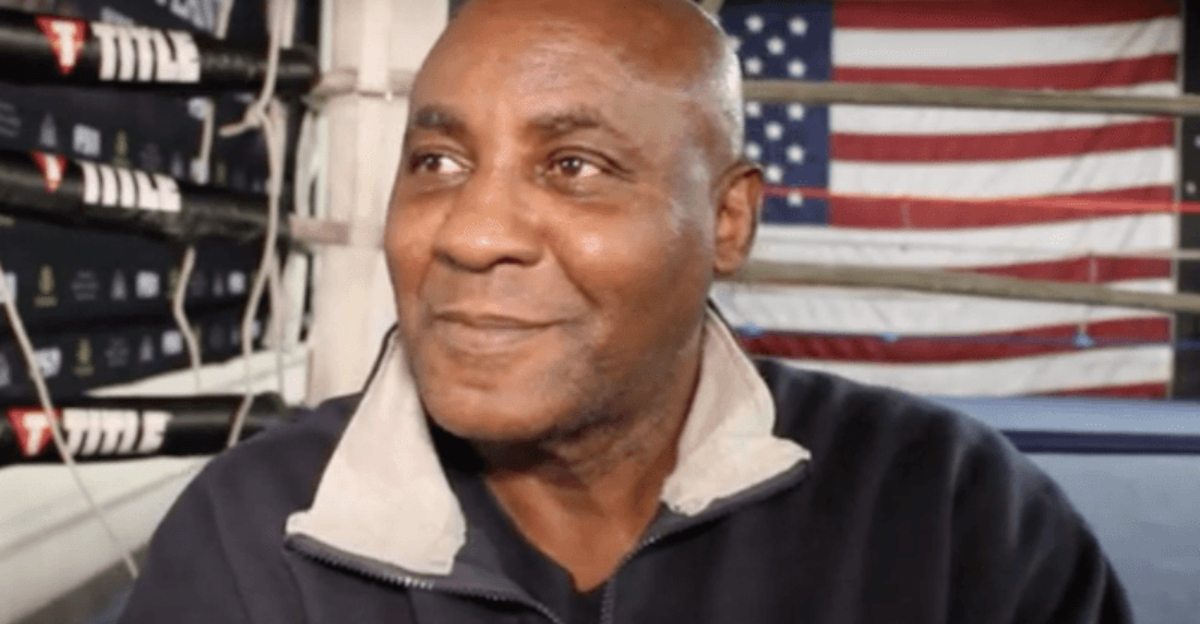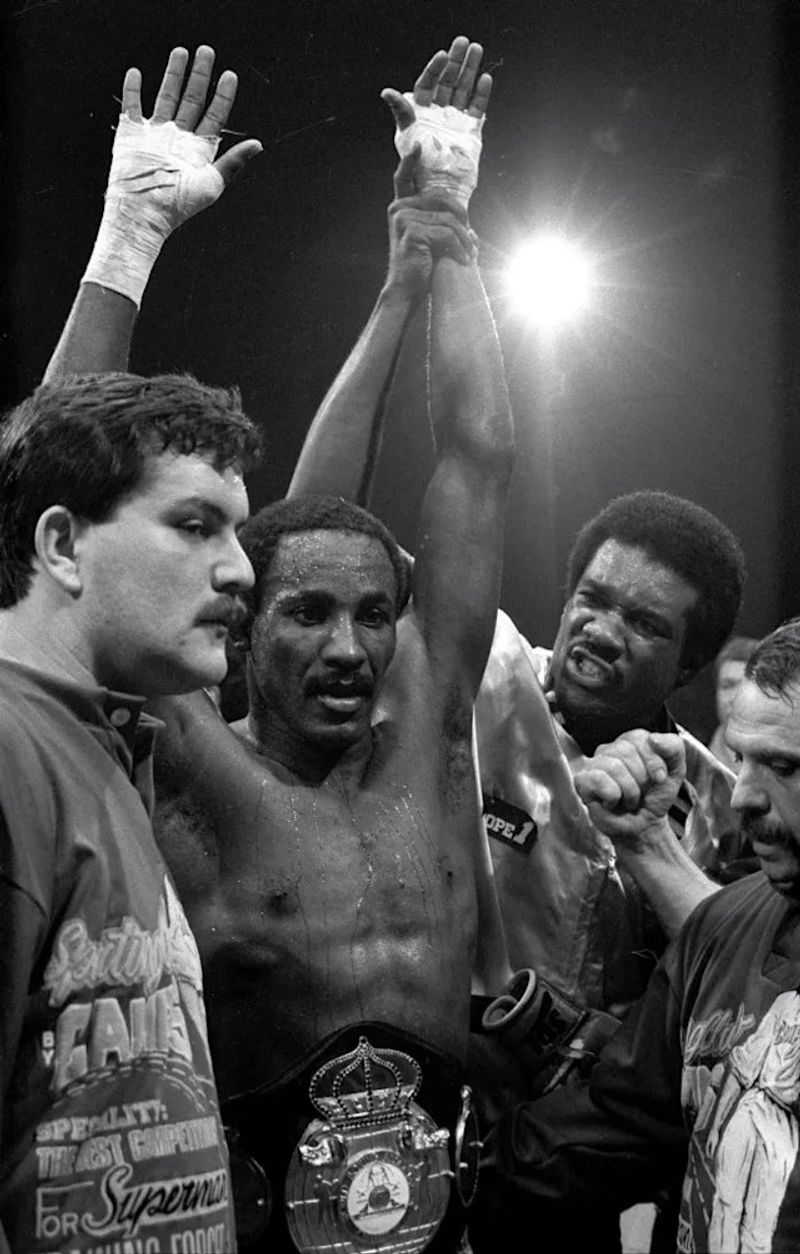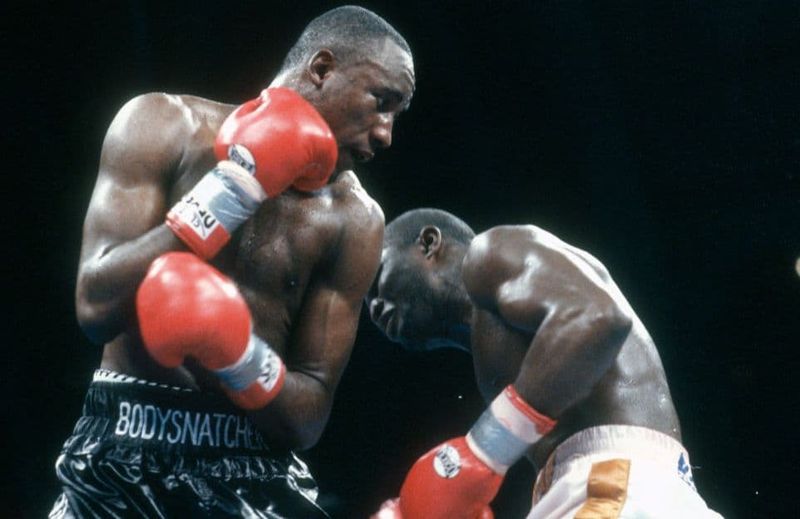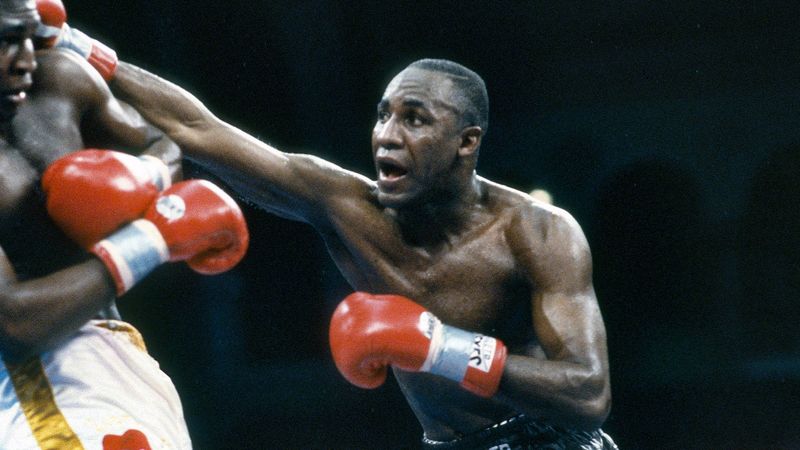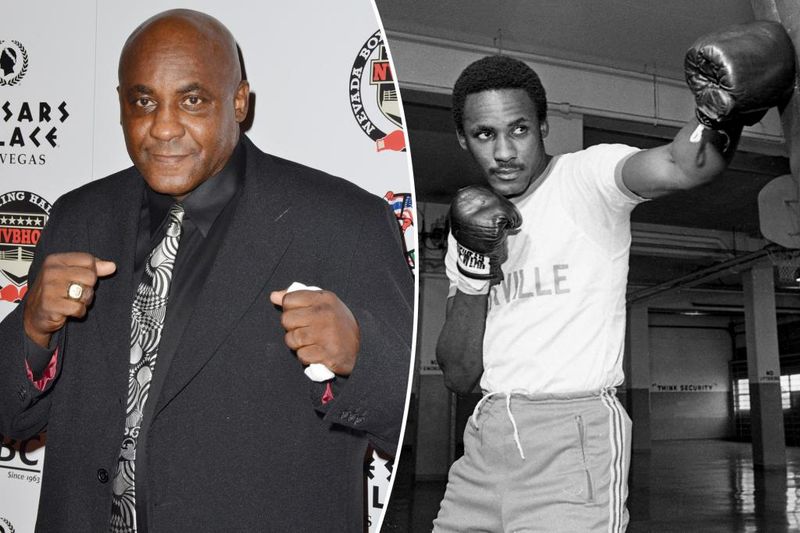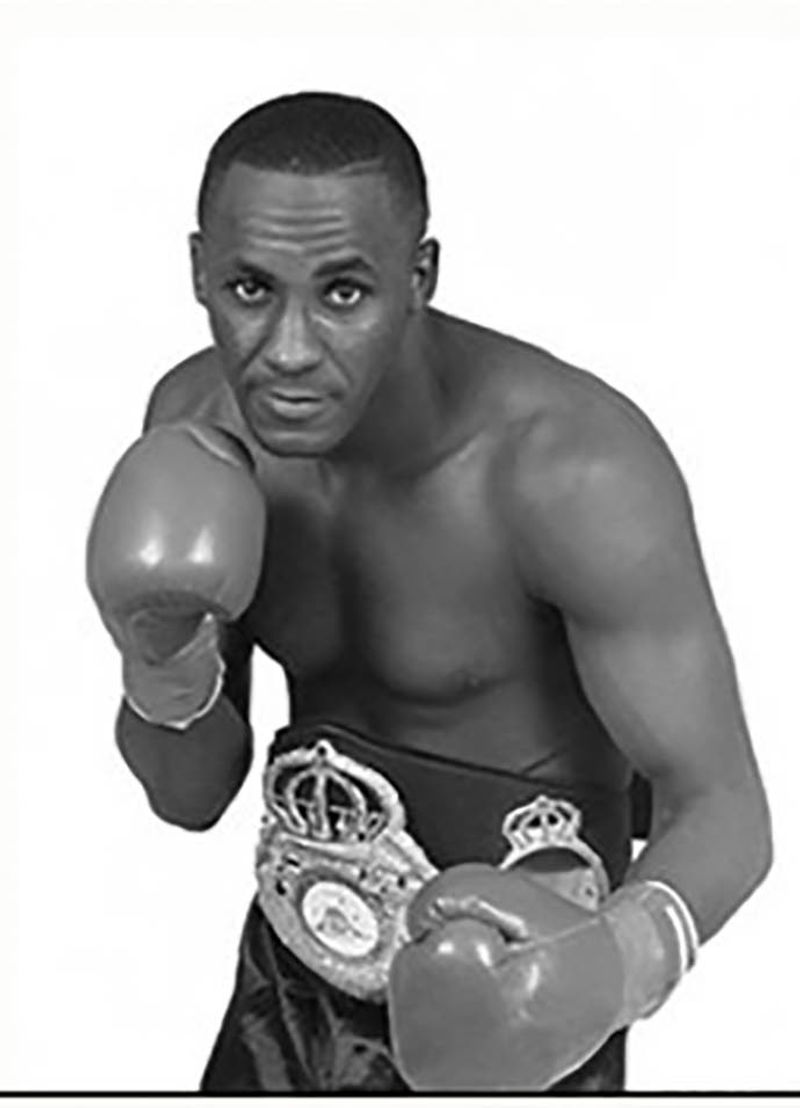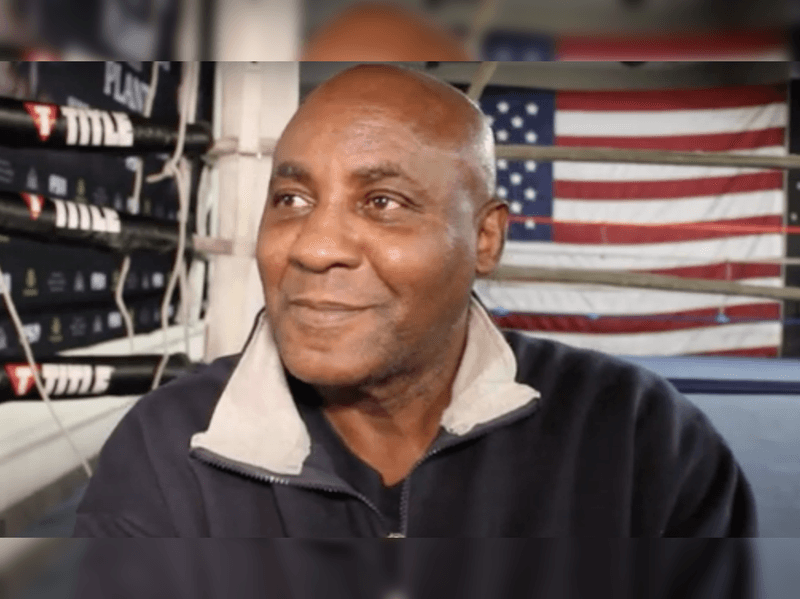Mike McCallum, the legendary Jamaican boxer known as ‘The Bodysnatcher,’ left an indelible mark on the sport before his recent passing.
His technical brilliance, devastating body punches, and championship pedigree made him one of boxing’s most respected figures.
Let’s honor McCallum’s extraordinary legacy by revisiting the moments that defined his illustrious career.
1. Jamaica’s Pioneer World Champion
Standing tall at Madison Square Garden in 1984, Mike McCallum etched his name in history by becoming Jamaica’s first world boxing champion. The fight against Sean Mannion wasn’t just another bout—it was a declaration that Jamaica had arrived on boxing’s biggest stage.
McCallum’s masterful performance to claim the WBA super welterweight title showcased his technical brilliance and relentless pressure. His countrymen celebrated wildly back home as he raised the belt high above his head.
This watershed moment opened doors for future Jamaican fighters and established McCallum as more than just a champion—he became a national hero whose influence extended far beyond the boxing ring.
2. Conquering Three Weight Divisions
Few fighters possess the extraordinary skill to dominate across multiple weight classes. McCallum’s body transformed, yet his boxing brilliance remained constant as he captured world titles in three separate divisions.
Starting as WBA super welterweight champion, he moved up to claim the WBA middleweight crown before ultimately securing the WBC light heavyweight title. Each championship represented not just added weight, but increased challenges against naturally bigger opponents.
This rare achievement—accomplished by only 18 boxers in history at the time—showcased McCallum’s exceptional adaptability. His body punching remained devastating regardless of weight class, proving his nickname transcended divisions just as effectively as his talents.
3. The Birth of ‘The Bodysnatcher’
Nicknames in boxing often emerge from a fighter’s most fearsome attribute. For McCallum, his systematic dismantling of opponents through precise, punishing body shots created his legendary moniker: ‘The Bodysnatcher.’
His liver shot became boxing’s most dreaded weapon—a perfectly placed hook that collapsed opponents where they stood. Unlike head hunters seeking highlight-reel knockouts, McCallum methodically broke fighters down from the bottom up.
Opponents would prepare for months, yet still crumble when those devastating hooks dug into their sides. The psychological effect was just as powerful as the physical—fighters knew what was coming but remained powerless to stop the systematic body attack that defined McCallum’s artistry.
4. Unbreakable Chin and Iron Will
Iron-chinned warriors define boxing lore, and McCallum’s durability became legendary. Throughout 55 professional bouts against the sport’s elite punchers, ‘The Bodysnatcher’ was never once knocked out—a testament to his exceptional conditioning and defensive mastery.
His professional record speaks volumes: 49 wins (36 by knockout), 5 losses, and 1 draw. Even in defeat, McCallum remained standing, absorbing punishment that would have felled lesser fighters.
This remarkable resilience wasn’t just physical—it reflected his mental fortitude. When opponents landed their best shots, McCallum simply nodded acknowledgment and continued pressing forward, breaking spirits as methodically as he broke down bodies.
5. The James Toney Trilogy
Boxing’s greatest rivalries transcend individual fights to become sagas, and McCallum’s trilogy with James Toney exemplifies this tradition. Their first encounter ended in controversy—a draw many believed McCallum had won despite facing a younger, undefeated champion.
The rematches delivered even more technical brilliance as these master boxers matched wits and skills across twelve rounds each time. Though McCallum lost both return bouts by decision, the margins were razor-thin, showcasing his ability to compete with elite talent even as age began catching up.
This trilogy stands as a boxing purist’s dream—three chess matches disguised as fights between two defensive wizards whose mutual respect grew with each shared round.
6. The Curry Knockout Masterclass
“Armed and Dangerous” wasn’t just clever marketing for McCallum’s 1987 showdown with Donald Curry—it perfectly described the tactical destruction that followed. Curry entered as boxing’s golden boy, but McCallum had other plans.
For four rounds, McCallum weathered Curry’s offensive storm, studying patterns and setting traps. In the fifth, the masterplan unfolded: a perfectly timed right hook crashed into Curry’s jaw, sending him crashing to the canvas in spectacular fashion.
This wasn’t just a victory—it was McCallum announcing himself as more than a body puncher. The knockout demonstrated his complete arsenal and cemented his reputation as one of boxing’s most intelligent finishers, capable of ending fights with either hand to any target.
7. Boxing Hall of Fame Recognition
The 2003 International Boxing Hall of Fame induction ceremony marked boxing’s official recognition of what insiders had long known—Mike McCallum belonged among the sport’s immortals. His enshrinement validated a career built on technical excellence rather than promotional hype.
Standing alongside legends in Canastota, New York, McCallum’s humble acceptance speech reflected the quiet dignity that characterized his career. Fellow inductees and boxing luminaries praised his perfect technique and fighting intelligence.
This honor represented more than a career capstone—it was formal acknowledgment that ‘The Bodysnatcher’ had transcended championship belts to become a standard-bearer for boxing’s purest principles. His legacy would now inspire generations of technical fighters following in his footsteps.
8. Olympic Dreams and Amateur Glory
Before professional riches beckoned, McCallum built his foundation through an exemplary amateur career. Representing Jamaica at the 1976 Montreal Olympics, he showcased the technical brilliance that would later become his professional trademark.
His golden moments came at the 1978 Commonwealth Games and Central American and Caribbean Games, where his amateur style—already more polished than many professionals—overwhelmed opponents. These tournaments provided the international stage where McCallum refined his craft.
The discipline and fundamentals developed during these formative years created the boxer who would later frustrate world champions. His amateur pedigree explains why McCallum entered the professional ranks with such advanced skills—he had already mastered boxing’s essential science.
9. The Teacher’s New Chapter
Great champions often struggle with life after competition, but McCallum found his second calling in the same gyms where he honed his craft. After retiring in 1997, he seamlessly transitioned from champion to teacher, guiding rising talents through boxing’s treacherous waters.
His Las Vegas training sessions became master classes in the sweet science. Young fighters treasured his insights on weight transfer, defensive positioning, and the devastating body attack that made him famous.
McCallum’s teaching style mirrored his fighting approach—methodical, detail-oriented, and focused on fundamentals. His greatest joy came from watching his students implement his techniques, passing down boxing wisdom that might otherwise have been lost with the fading era of technical masters.
10. Final Bell: A Champion’s Farewell
Life’s cruelest irony struck when McCallum, a model of physical fitness even in his sixties, fell suddenly ill while driving to the gym. His passing prompted an outpouring of grief across the boxing world, with champions past and present honoring the technical genius who had influenced so many careers.
Jamaica’s Minister of Sport, Olivia Grange, led national tributes, calling him “a pioneer who blazed a trail for generations of Jamaican fighters.” Former opponents became his most vocal admirers, with James Toney emotionally recalling their battles.
The boxing community didn’t just lose a champion—it lost a guardian of the sport’s purest traditions. McCallum’s legacy lives on through the fighters he inspired and the technical standard he established.
